
In his book 'On Conoids and Spheroids', Archimedes computed the area of an ellipse (Proposition 4).
When we shrink vertically a circle we get an ellipse. An ellipse has a major and a minor semi-axis.
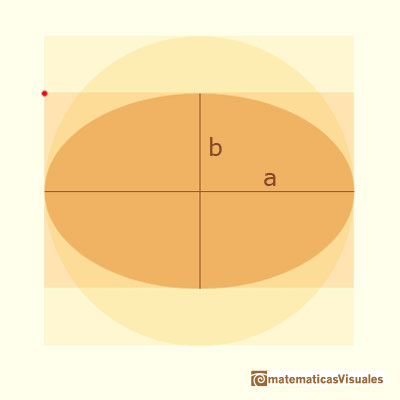
The formula for the area of an ellipse is a beautiful generalization of the area of a circle. The area of an ellipse with major and minor semi-axes a and b is:
First we are going to deduce this formula using an intuitive approach. Archimedes had a clear distinction between his 'Method' of discovering results and a theorem rigurous proof. We can see a good example of Archimedes' 'Method' for discovering in Archimedes: Area of a Parabolic Segment.
After that, we are going to explain how Archimedes demonstrated the result.
The circle of radius a, circunscribed about the ellipse is called its auxiliary circle. If we shrink (vertically) the circle we get an ellipse. Given a point m in the ellipse it satisfy the relation:
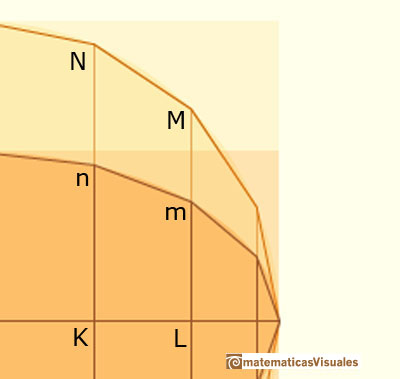
Archimedes considered some polygons inscribed in the ellipse and in the auxiliary circle. These polygons having its number of sides equals to a multiple of 4 and with opposite ends of the horizontal diameter as vertices.
The polygon, P', inscribed in the circle is a regular polygon and P is the polygon inscribed in the ellipse E whose vertices are the intersections with E of the perpendiculars from the vertices of P' to the horizontal axis of E. We can consider these polygons as unions of triangles and trapezoids. Because of the shrinking we have the relation:
Then the two areas of the two polygons P and P' are in the same relation:
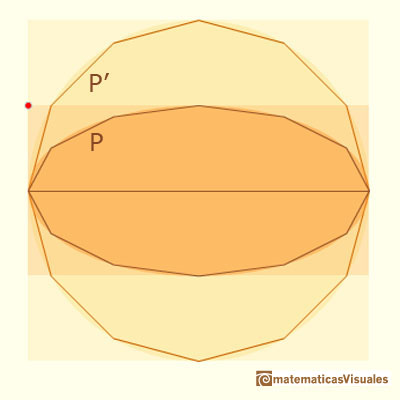
But these polygons can have as much sides as we want and they can be so similar to the circle and the ellipse as we want, then we are going to agree that: (they exhaust the circle and the ellipse)
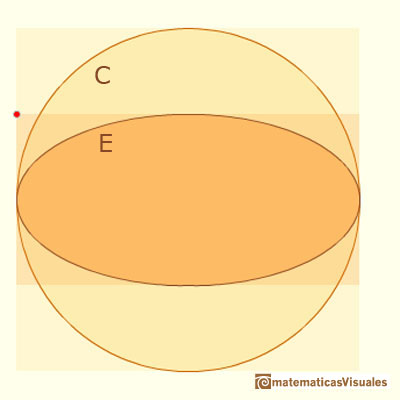
Then we get the formula for the area of an ellipse:
If our intuituion is correct, this is the formula for the area of an ellipse. Using the zoom over the mathlet we can see that the approximation is very good but that the polygon never fills the ellipse nor the circle.
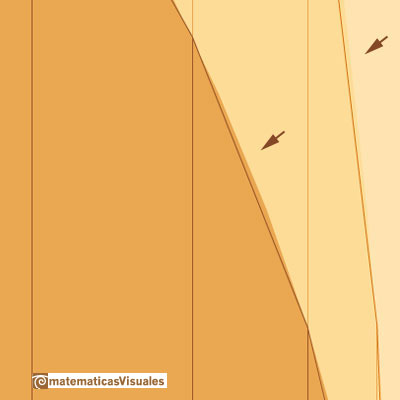
This is a nice approach but Archimedes needed a logical and rigorous proof. His proof is not an example of the use of Eudoxus's exhaustion tecnique with inscribed and excribed polygons but it is a good example of the typical use that Archimedes made of a double 'reductio ad absurdum'.
REFERENCES
 NEXT
NEXT
 PREVIOUS
PREVIOUS
MORE LINKS




























